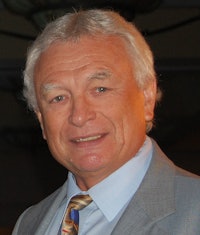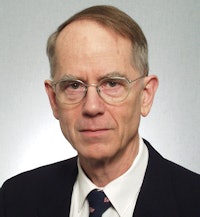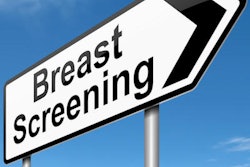
Potentially fatal diseases such as cancer arouse feelings of apprehension and fear in most of us. Breast cancer has become the most widely publicized cancer for a number of reasons. First and foremost, it is steadily increasing in frequency, it has become the most common cancer in women, and when it strikes, it affects women, men, and children alike.
On the positive side, considerable advances in diagnosis and therapy offer much hope for breast cancer patients and for women who are concerned that they, too, may have breast cancer. Unfortunately, misinformation abounds and causes much needless concern.
A case in point is the New York Times opinion piece1 by Dr. H. Gilbert Welch on November 21, which coincided with the publication of an article that he co-authored in the New England Journal of Medicine.
 Dr. László Tabár.
Dr. László Tabár.
We wish to point out that his misleading conclusions on the effectiveness of mammography screening were made without his knowing which woman was or was not screened, or how often, or even if a breast cancer was diagnosed in a woman who did or did not get a mammogram.
On the contrary, researchers who do have this information for every woman in several well-designed scientific trials have proved that women invited to mammography screening have a significant 25% to 30% decrease in breast cancer death. More importantly, 43% to 49% fewer women die from breast cancer if they get mammograms regularly. These benefits have been known for decades and have been repeatedly reaffirmed by carefully performed scientific studies.
The "new studies" published by Welch and other foes of early cancer diagnosis, which he calls "the view from space," are in fact several steps backward for scientific analysis. They all lack key data required for accurate results, a deficiency which forces them to make multiple assumptions and even resort to guesswork.
Welch does admit to these deficiencies in his New England Journal of Medicine publication,2 as follows:
- "Tables 1 and 2, however, are based on assumptions ..."
- "We were forced to make some assumptions ..."
- "The simplest approach was to assume ..."
- "In our best-guess estimate ..."
- "Our assumption ... was admittedly arbitrary ..."
- "Fourth, our best-guess estimate ..."
- "Our method did not allow us to disentangle the two. We did, however, estimate ..."
- "This analysis suggested ..."
In fact, these terms of imprecision were used more than 71 times in that NEJM article. Welch even goes so far as to admit the following: "Unfortunately, because the [Surveillance, Epidemiology, and End Results (SEER)] program does not collect data on the method of detection, we were unable to distinguish screening-detected from clinically detected cancers." However, he conveniently avoids mentioning all these failings when writing for newspapers.
 Dr. Peter B. Dean.
Dr. Peter B. Dean.
Women deserve information based on reliable evidence, but Welch offers women statistical manipulations weakened by missing facts; as he puts it, his research is "a view from space." Using his approach, it is possible to arrive at virtually any desired result supporting a predetermined agenda.
In spite of his shaky statistical ground, Welch tries to convince his readers that improvements in therapy are steadily replacing the benefits of early breast cancer diagnosis with mammography. Researchers from the U.S. National Cancer Institute and from Europe admit that "Without individual data it is impossible to completely separate the effects of improved treatment and health service organization from that of screening."3
Continuing improvements in therapy are an important factor in the fight against breast cancer, but as data from all sources, including the National Cancer Institute, clearly show, therapy is most effective when breast cancers are treated earlier.
The advantage of treating breast cancer earlier through mammography screening was proved by a recently published study in Sweden of women in their 40s.4 In half of the country, county officials decided to invite women to screening starting at age 40, but in the other half of the country the starting age was 50.
This situation lasted for a period of 16 years. Detailed analysis of every breast cancer case diagnosed in women ages 40 to 49 showed that death from breast cancer was 29% lower in the screened women, despite uniform therapy guidelines throughout the whole country. Women who did not get mammography screening suffered the actual harm of a significantly higher breast cancer death rate, despite the use of modern therapeutic regimens.
We can all agree that women need to be reliably informed about breast cancer screening, but evidence-based information requires access to individual patient data, which Welch and other foes of screening do not have.
Instead, they base their arguments on inadequate data and multiple assumptions, consider their own estimates on breast cancer mortality superior to the actual facts, and allow themselves to speculate on the relative impact of treatment versus screening on breast cancer mortality. Such flawed statistics and misleading conclusions should not be used to misinform women and their doctors.
Dr. László Tabár is professor emeritus of radiology and former medical director of the department of mammography at Falun Central Hospital in Sweden.
Dr. Peter B. Dean is professor emeritus of radiology and former director of breast imaging at the University of Turku in Finland.
The comments and observations expressed herein do not necessarily reflect the opinions of AuntMinnie.com or AuntMinnieEurope.com.
References
- Welch HG. Cancer survivor or victim of overdiagnosis? New York Times. November 21, 2012. http://www.nytimes.com/2012/11/22/opinion/cancer-survivor-or-victim-of-overdiagnosis.html. Accessed December 12, 2012.
- Bleyer A, Welch HG. Effect of three decades of screening mammography on breast-cancer incidence. N Engl J Med. November 22, 2012;367(21):1998-2005. http://www.nejm.org/doi/full/10.1056/NEJMoa1206809.
- Haukka J, Byrnes G, Boniol M, Autier P. Trends in breast cancer mortality in Sweden before and after implementation of mammography screening. PLOS One. September 26, 2011. http://www.plosone.org/article/info%3Adoi%2F10.1371%2Fjournal.pone.0022422. Accessed December 12, 2012.
- Hellquist BN, Duffy SW, Abdsaleh S, et al. Effectiveness of population-based service screening with mammography for women ages 40 to 49 years. Cancer. February 15, 2011;117(4):714-22. http://onlinelibrary.wiley.com/doi/10.1002/cncr.25650/abstract.



















